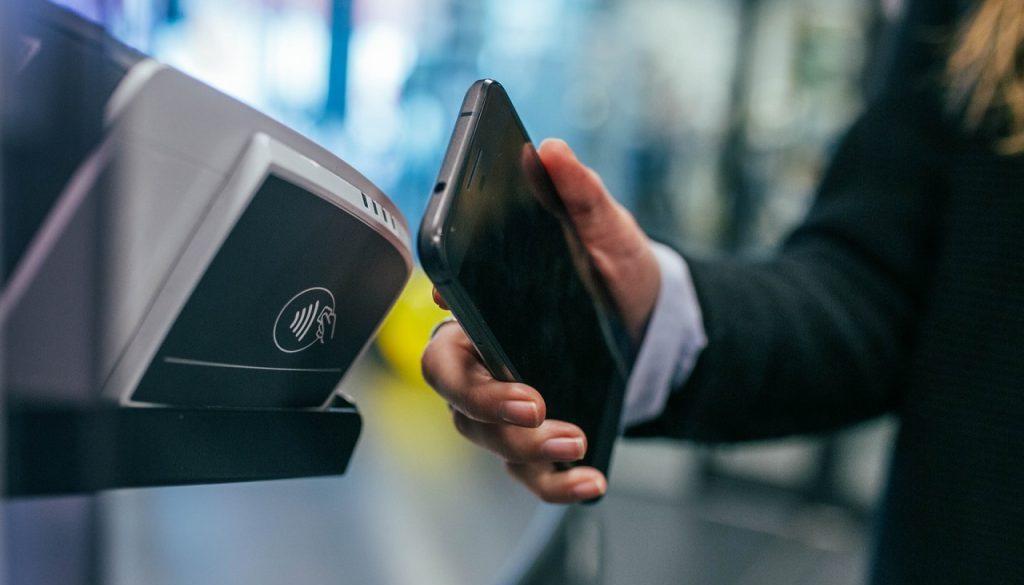Contactless payments: the new norm in the new normal

Since 2004, contactless payments were set to become the next major trend in consumer payments. Industry analysts, banks, and payment solutions providers all pegged the technology to become predominant to the point of being mundane in just a few short years.
Contactless payment solutions promised faster, more secure point-of-sale (POS) transactions for merchants and customers. It also assured higher charge volumes for banks, as cash transactions were expected to move to cards because of the convenience it offered. All stakeholders in the ecosystem were set to benefit.
But, despite the industry’s excitement and anticipation, contactless payments did not take hold in the US the way it did in similar markets such as in Canada and the UK. By 2016, most card issuers stopped issuing contactless chip cards, and only 3.4% of cards in the US market were enabled for contactless payments. But outside the US, two out of every five payments are contactless.
Fast forward to today, the COVID-19 pandemic and consequent demand for more hygienic, touch-free alternatives led to a significant increase in contactless payment adoption throughout the world. According to Mastercard, cash is being preferred less and less, and contactless payments are becoming the norm. Seventy-eight percent of consumers now consider contactless to be their preferred method of payment, which has more than doubled in March 2020 compared to 2019.
What’s driving the change?
People do not shop from places that are not safe.
COVID-19 has pushed them toward new and safer ways that are in lockstep with the philosophy of a “new normal” way of life. Contactless technologies reduce the risks of infection, thereby accelerating the adoption.
Contactless payments are easy, and people prefer easy.
Technological innovations in the retail sector paved the way for information and digital-based commerce. Instant data obtained from the devices used are transferred to central databases over networks. In the backend, machine learning and artificial intelligence work to monitor and make transactions secure. Contactless payments also employ sensors and camera-assisted deep learning-based internet of things applications, which are easier than handling cash, PIN pads and wielding a pen for signature-based payments.
Contactless payments are perceived to be safer.
A MasterCard survey of 17,000 people showed that touchless payments are perceived to be safer than all other forms of payment. The finding is no surprise if we look at how the technology works.
Contactless payments do not transmit the name or the card number, and they do not need a three-digit security code (CVV). Instead of needing the dual combination of the chip and one-time security code, contactless options use a sophisticated tokenized ID to mask the credit card number and other sensitive information. Only when we tap the card and place it within two inches of a POS device, the transaction is initiated.
Technology and acceptance are not an issue anymore.
Most of the technical barriers and availability concerns of contactless payments are now nonexistent. Consumers with a contactless card can tap-and-pay at many, if not most, merchants. Since the onset of the pandemic, every bank has announced that they will encourage and prioritize contactless payments. Even before the pandemic, Visa estimated that 80 of the top 100 merchants by transaction volume offer contactless payment options at the checkout counter.
The rise and ease in digital and contactless payments among consumers and merchants are likely to stick post-pandemic. As more people get a chance to experience contactless payments as part of their everyday routine, tapping to pay will become second nature for convenience-driven and safety-conscious consumers everywhere and will be the new norm in the new normal.
As we continue to live the new normal and navigate the post-COVID world, there’s little doubt we are going to witness a steep rise in contactless payments adoption. The technology is going to be the preferred mode of payment for customers across industries. In order for businesses to stay relevant and provide satisfactory customer experience, they must embrace the change. Relevantz can help you leverage the benefits of contactless payment technology. Our services are designed with our market-proven understanding of the latest technologies, applications, infrastructure, security, operations, industry domains and human-centric design to mitigate transformation risks as you build for the future.
